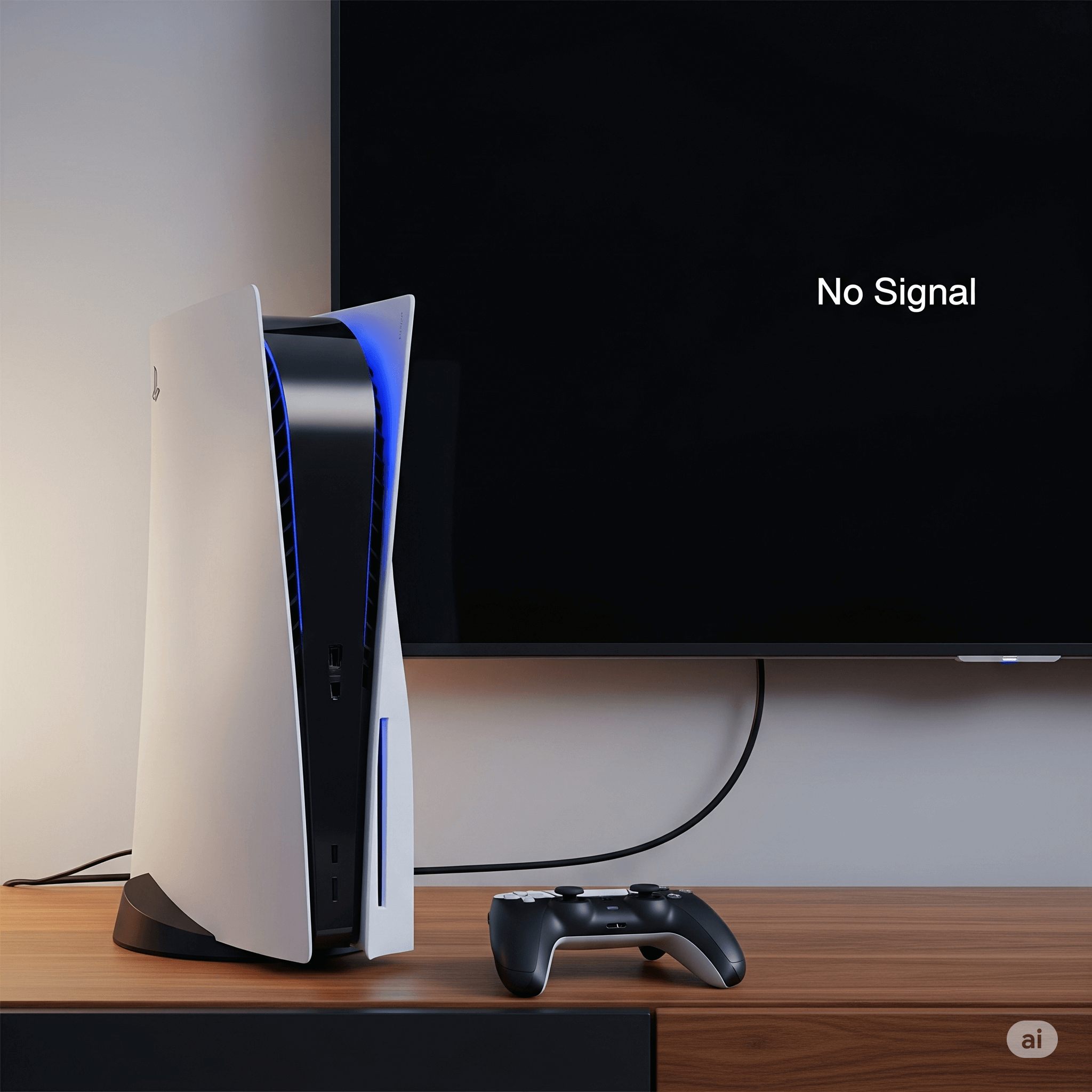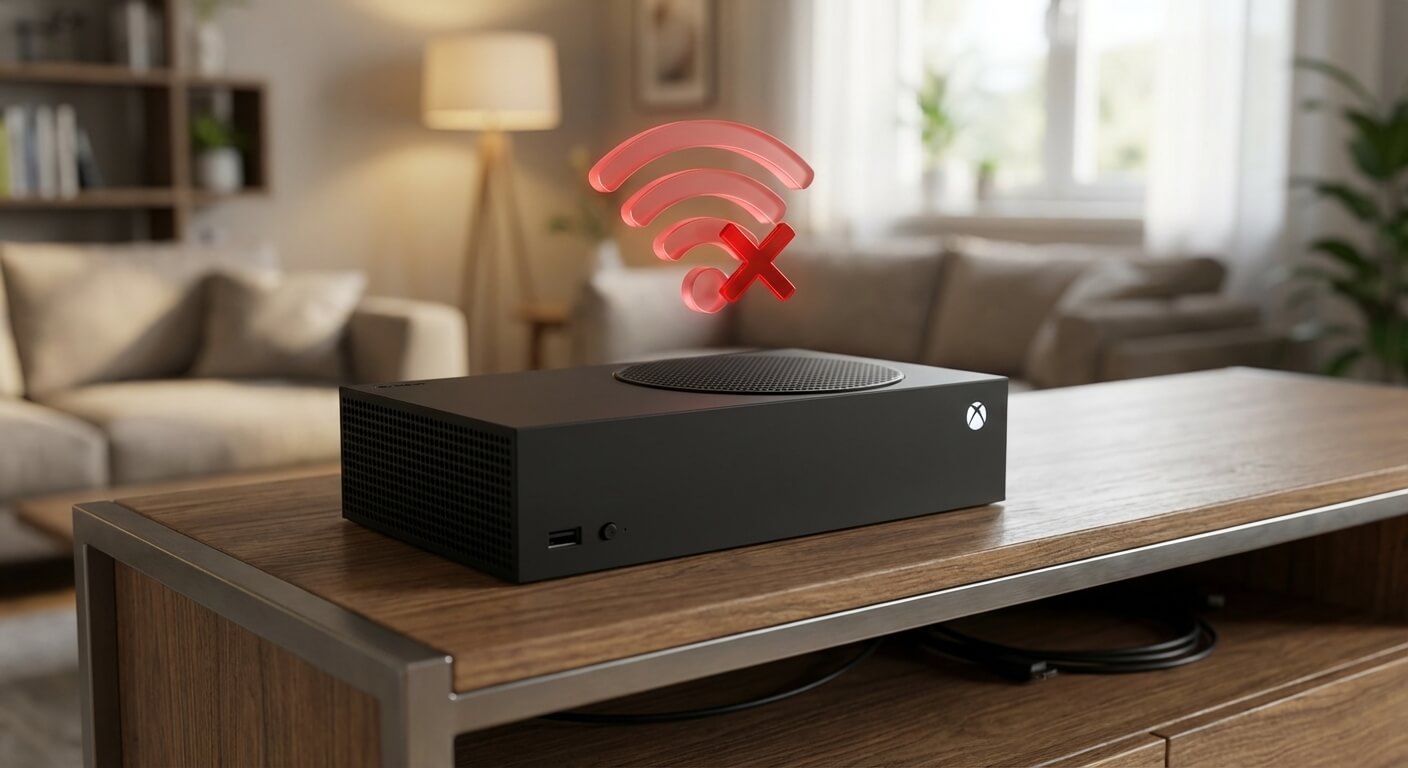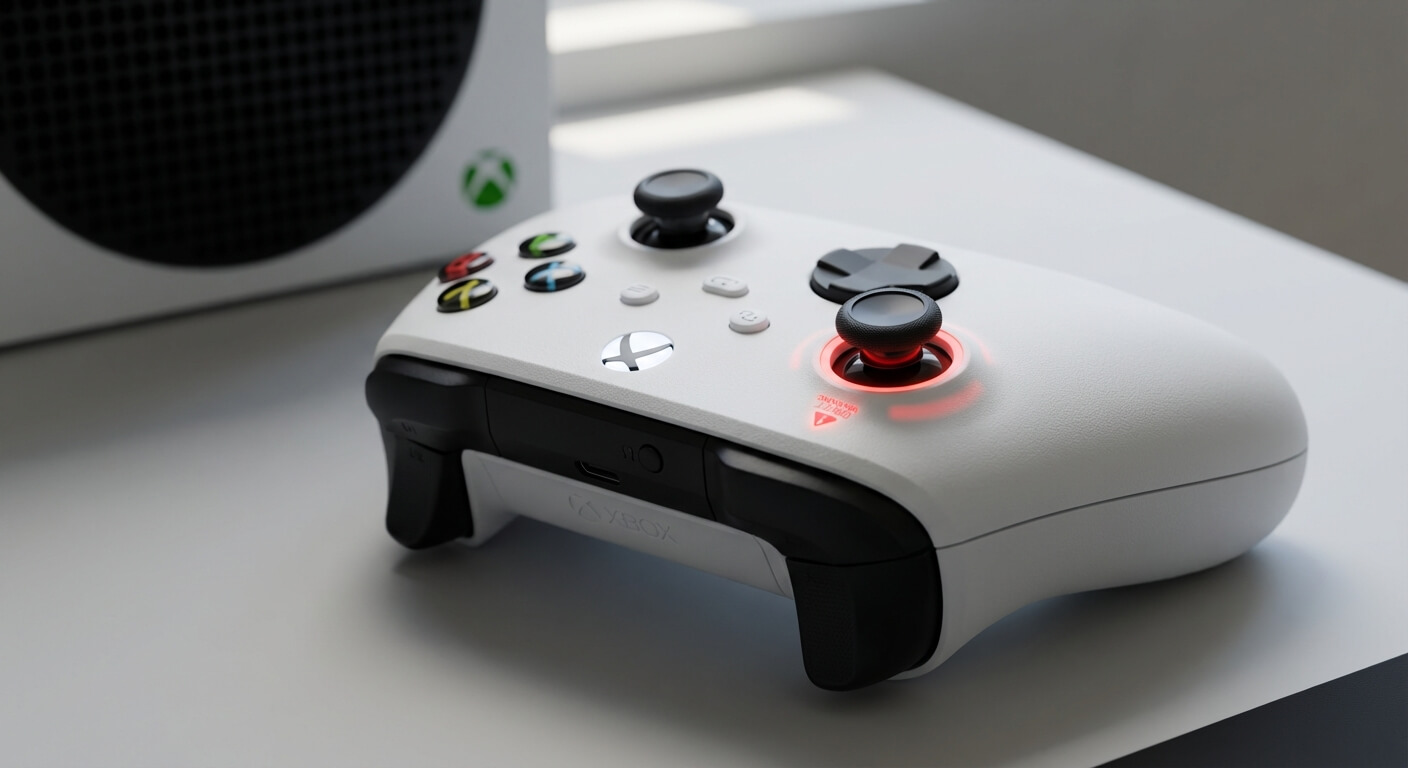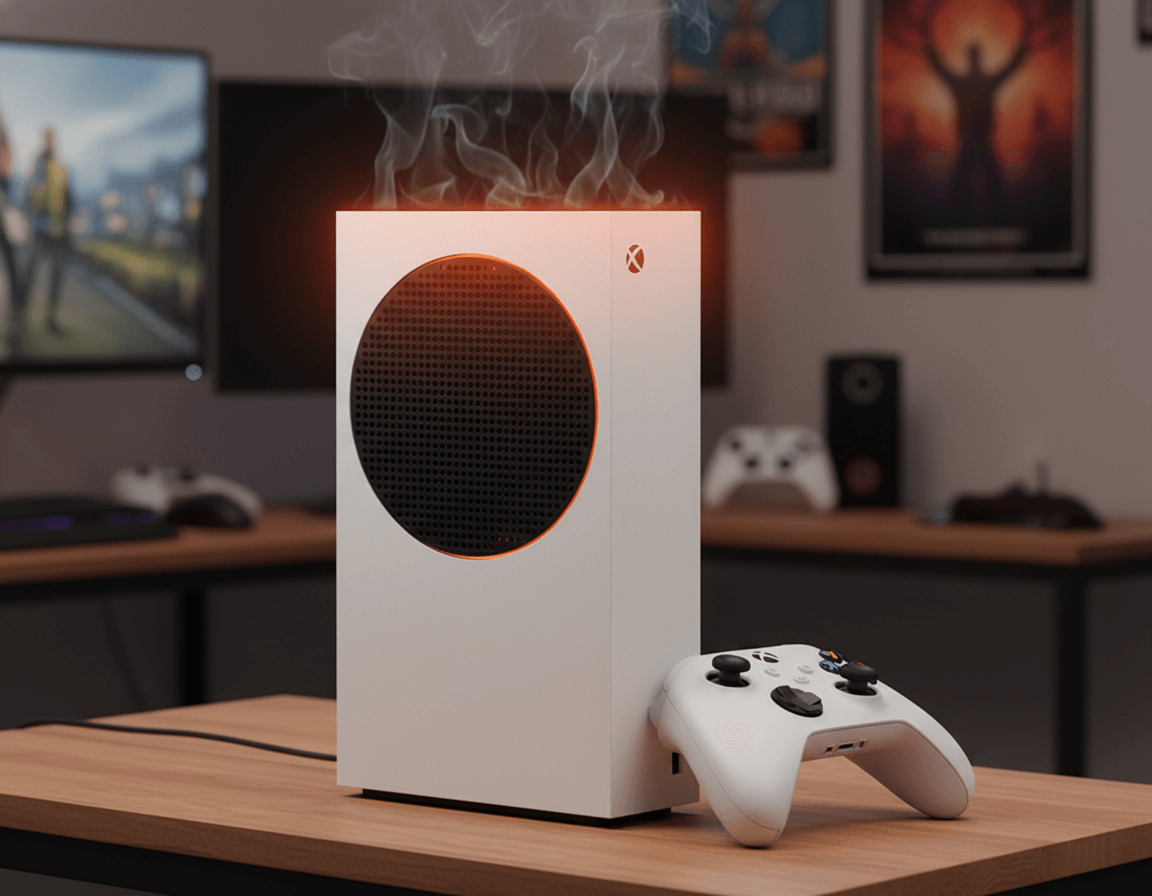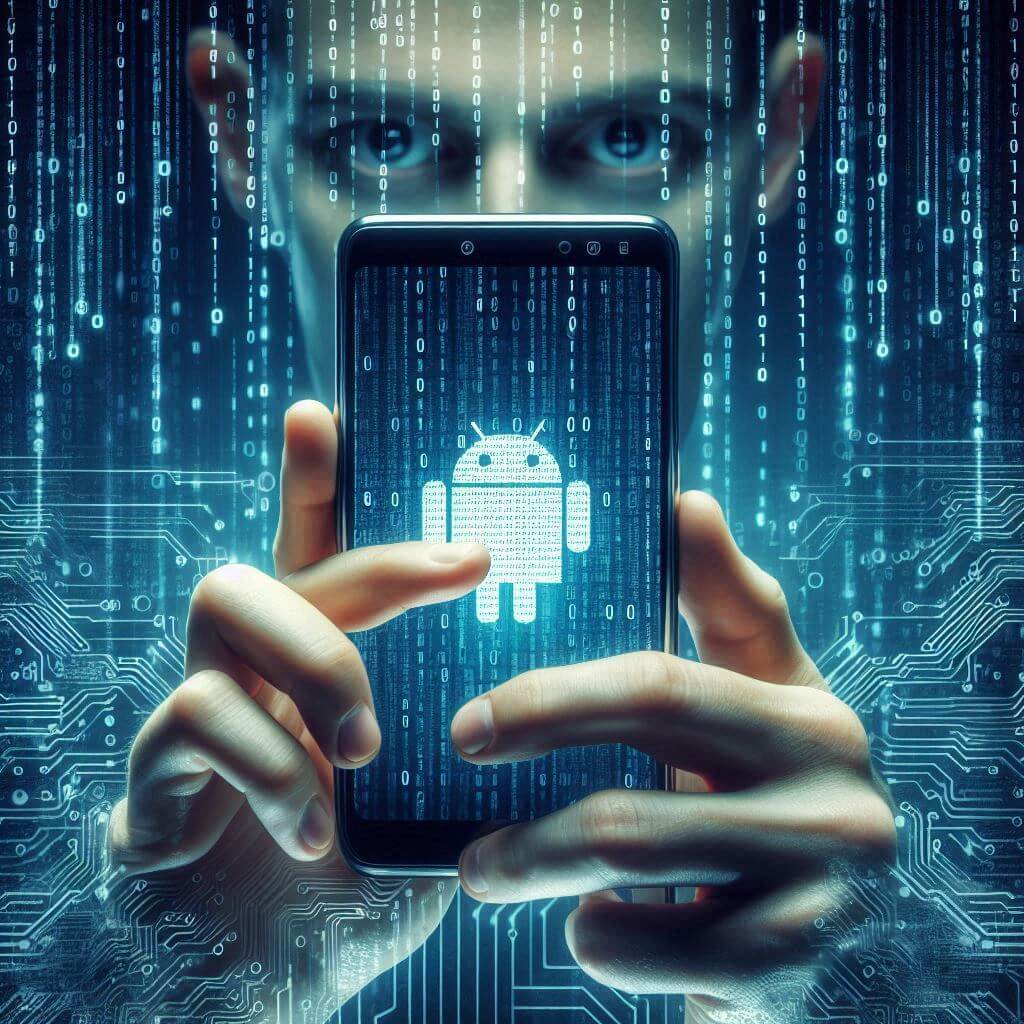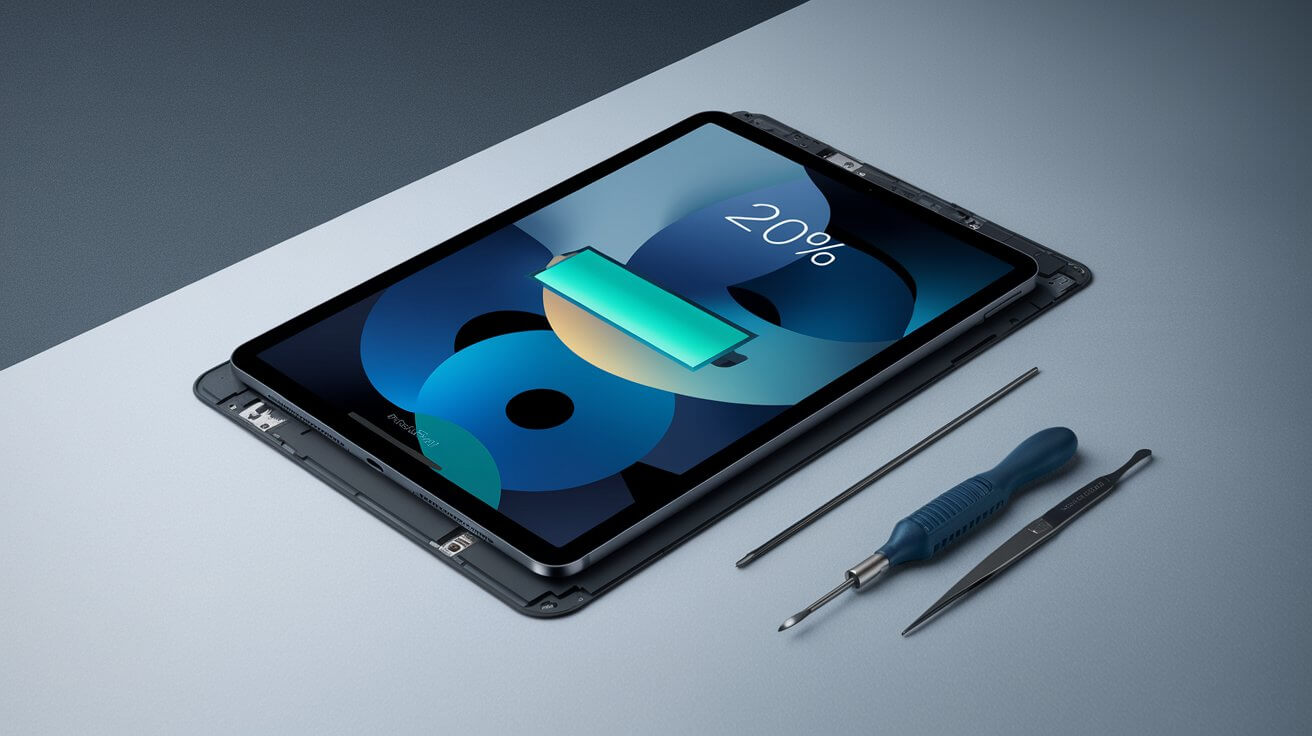After spending years troubleshooting gaming consoles at Gizmo Pros, I’ve learned that PS5 display problems often look scarier than they are. Nine times out of ten, it’s something simple that can be resolved in minutes rather than requiring a trip to the repair shop. Read on to learn exactly what to do when your PS5 isn’t showing on your television.
Why Your PS5 Isn’t Showing on TV
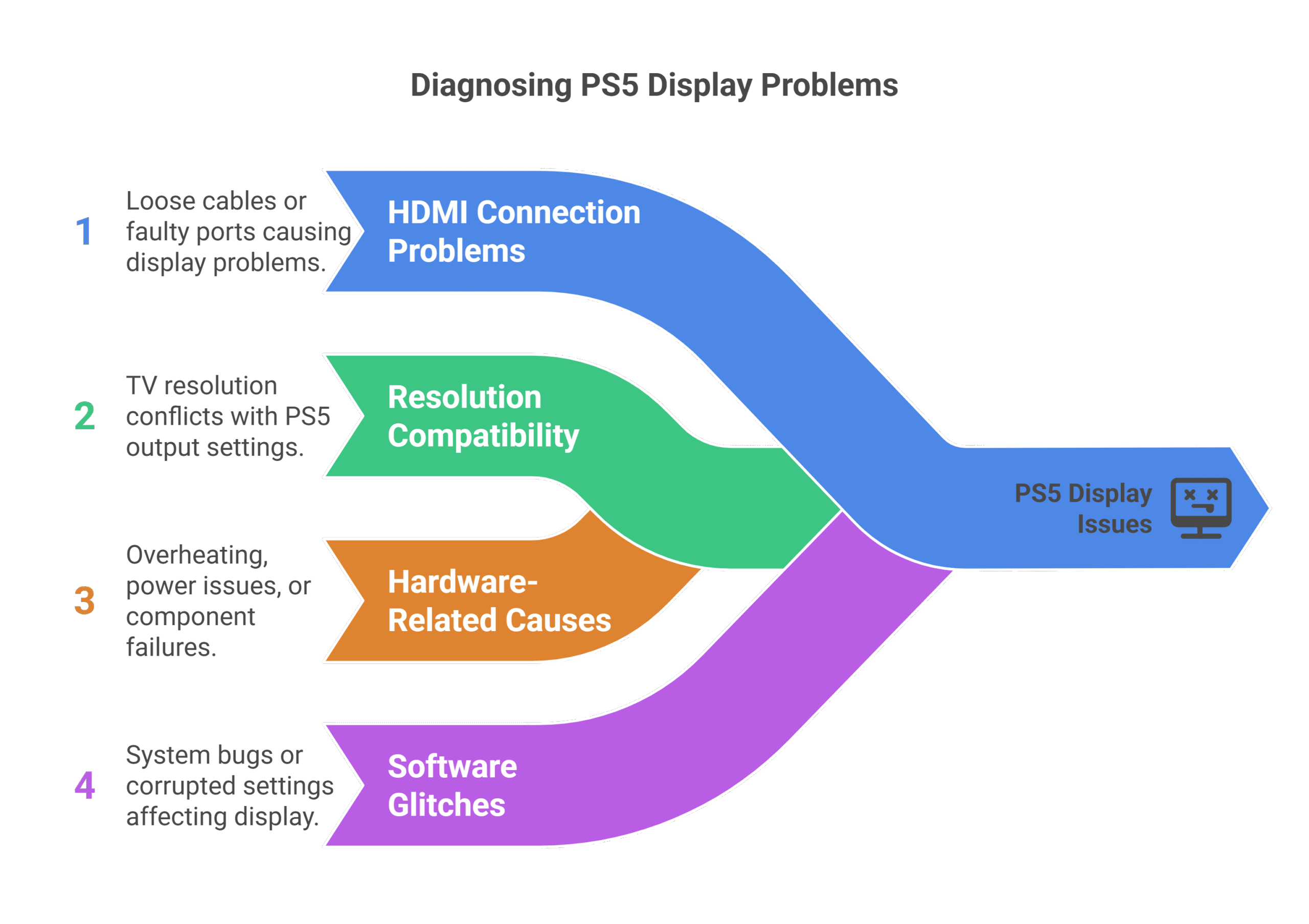
Before diving into solutions, let’s understand what might be causing this problem. Display issues with the PS5 typically stem from a few key areas:
1- HDMI Connection Problems
- Loose or damaged HDMI cables
- Faulty HDMI ports on either the PS5 or TV
- Incorrect HDMI input selection
2- Resolution Compatibility Issues
- TV doesn’t support the PS5’s output resolution
- HDR/4K settings conflicts
- Refresh rate mismatches
3- Hardware-Related Causes
- Overheating protection activation
- Power supply irregularities
- Internal component failures
4- Software Glitches
- System software bugs
- Safe mode activation
- Corrupted display settings
Step-by-Step Troubleshooting Guide
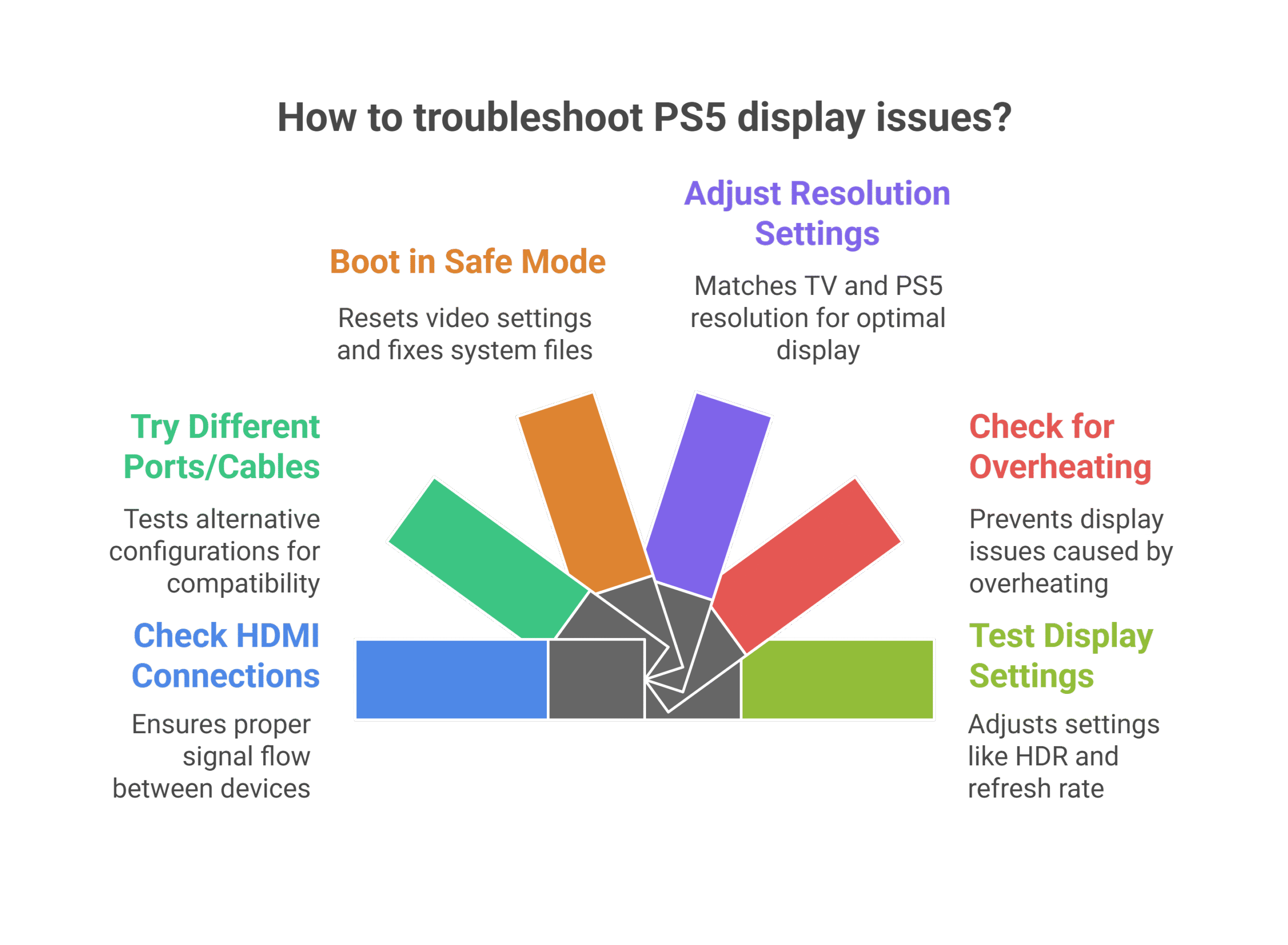
1. Check the Basics First
Start with these simple checks before moving to advanced solutions:
Verify HDMI Connections
- Ensure both ends of the HDMI cable are firmly seated
- Try a different HDMI cable (this fixes about 30% of cases I see)
- Test the same HDMI cable with another device to confirm it’s working
Confirm TV Input Selection
- Use your TV remote to cycle through all HDMI inputs
- Some TVs label inputs differently (HDMI 1, HDMI 2, etc.)
- Wait a few seconds on each input for the signal to register
Power Cycle Everything
- Turn off both PS5 and TV completely
- Unplug both devices for 30 seconds
- Plug in and power on your TV first, then the PS5
2. Try Different HDMI Ports and Cables
If the basic checks don’t work, test different configurations:
- Try every HDMI port on your TV
- Use the HDMI cable that came with your PS5 (it’s certified for the console’s specific requirements)
- Test with a different TV or monitor if available
3. Boot PS5 in Safe Mode
Safe mode can resolve many display-related issues by resetting video settings:
How to Enter Safe Mode:
- Turn off your PS5 completely
- Press and hold the power button until you hear two beeps (about 7 seconds)
- Connect your controller via USB cable
- Press the PS button on the controller
Safe Mode Options to Try:
- Change Video Output: Resets resolution to 1080p
- Reset PS5: Keeps games and data but resets system settings
- Rebuild Database: Fixes corrupted system files
4. Adjust Resolution Settings Manually
Sometimes your TV and PS5 aren’t speaking the same resolution language:
- In Safe Mode, select “Change Video Output”
- Choose a lower resolution (1080p instead of 4K)
- Restart your PS5 normally
- Go to Settings > Screen and Video > Video Output to fine-tune
5. Check for Overheating Issues
The PS5 has built-in overheating protection that can cause display problems:
Signs of Overheating:
- Console feels unusually hot
- Fan running at maximum speed
- Intermittent display loss
Solutions:
- Ensure proper ventilation around your PS5
- Clean dust from vents using compressed air
- Move the console away from heat sources
6. Test with Different Display Settings
Navigate to Settings > Screen and Video and try these adjustments:
- Disable HDR if your TV doesn’t fully support it
- Change from 4K to 1080p temporarily
- Adjust the refresh rate (120Hz to 60Hz)
- Turn off VRR (Variable Refresh Rate) if enabled
Advanced Troubleshooting Techniques
HDMI Device Link Settings
Some TVs have HDMI-CEC (Consumer Electronics Control) that can interfere:
- Go to Settings > System > HDMI on your PS5
- Try disabling “Enable HDMI Device Link”
- Restart both devices
Factory Reset (Last Resort)
If nothing else works, a factory reset might be necessary:
- Back up your save data to PlayStation Plus cloud storage or USB
- In Safe Mode, select “Reset PS5 (Reinstall System Software)”
- Follow the on-screen prompts
Warning: This erases everything on your console, so backup first!
When Hardware Might Be the Culprit
Sometimes the issue goes beyond software fixes. Here are signs you might have a hardware problem:
HDMI Port Damage
- Visible damage to the HDMI port
- Port feels loose when inserting cable
- Intermittent signal that comes and goes with cable movement
Internal Component Issues
- PS5 powers on but never displays anything
- Multiple HDMI cables and TVs don’t work
- System worked fine, then suddenly stopped
Power Supply Problems
- Console shuts off unexpectedly during gaming
- Power button doesn’t respond consistently
- LED indicators behave erratically
Professional Repair: When DIY Isn’t Enough
If you’ve tried everything and your PS5 still won’t display, it might be time for professional diagnosis. At Gizmo Pros, we see these issues regularly and can quickly identify whether it’s a simple fix or requires component replacement.
We specialize in:
- HDMI port repair and replacement
- Internal component diagnostics
- Software troubleshooting and recovery
- Complete system restoration
Our technicians have the specialized tools and genuine parts needed to properly repair PS5 hardware issues. Plus, we offer a 90-day warranty on all repairs, so you can game with confidence.
Common repairs we perform:
- HDMI port replacement (starting at $99 only)
- Power supply unit repair
- System board component-level repair
Alternative Gaming Solutions
While waiting for repairs or troubleshooting, consider these temporary solutions:
Remote Play
- Use your smartphone, tablet, or PC for remote play
- Download the PlayStation Remote Play app
- Connect to your PS5 over your home network
Different Display Options
- Try connecting to a computer monitor
- Use a different TV in your home
- Test with a friend’s display setup
The Bottom Line
PS5 display issues are frustrating, but they’re usually fixable. Start with the simple solutions like checking cables and inputs, then work your way up to safe mode and settings adjustments. Most problems I encounter in our shop are resolved without needing hardware repairs.
Remember, if your PS5 is still under warranty, contact Sony before attempting any major troubleshooting that might void coverage. However, basic steps like changing HDMI cables and adjusting settings won’t affect your warranty status.
